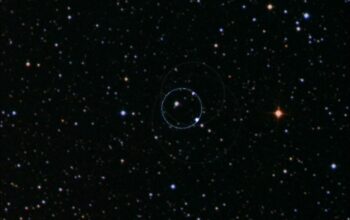Cosmic architecture, an awe-inspiring spectacle of the universe, embodies the magnificent tapestry of structure and order that emerges from the chaos of the cosmos. It is within this expansive and enigmatic gravitational theater that cluster formation occurs, revealing the intricate interplay of matter and energy on a grand scale. As a modern symposium of physicists, astronomers, and cosmologists delve into these celestial congregations, the dynamics of cluster formation unveil not merely the physical characteristics of galactic structures, but also the profound allegories embedded within the fabric of space and time.
To appreciate the formation of clusters, one must first navigate through the esoteric terminology of astrophysics. A cluster, in its rudimentary definition, constitutes a collection of galaxies held together by gravity, sometimes encompassing hundreds or even thousands of individual galaxies. These cosmic entities often serve as the foundational units of the larger-scale cosmic web, a vast structure that connects filaments of dark matter and gas, creating an astonishingly intricate network throughout the universe.
As cosmic artisans wielding tools of gravity and baryonic matter, galaxies coalesce under the relentless grip of gravitational forces. Imagine the cosmos as a vast ocean, where galaxies are akin to various marine life forms. Some float serenely, basking in the light of cosmic radiation, while others thrash about in a tempest of gravitational interactions. Over time, these interactions facilitate the alignment and eventual congregation of these galaxies, marking the inception of a cluster. This initial assemblage is not merely a happenstance; rather, it epitomizes the harmonious dance of attraction and repulsion, a cosmic ballet choreographed by the laws of physics.
Cluster formation can be likened to the creation of a masterpiece painting, where each brushstroke complements the others to evoke a singular vision. This collaborative phenomenon hinges on the principles of gravitational collapse and hierarchical clustering. Through gravitational collapse, regions of higher density within the primordial gases forge a preferential pathway for galaxy formation. Hierarchical clustering, in a contrapuntal manner, denotes how smaller structures amalgamate into larger aggregates, amplifying the complexity and grandeur of the resultant cosmic arrangement.
To elucidate the life cycle of these celestial clusters, one may invoke the metaphor of a thriving metropolis. The denser regions within the expanding universe are analogous to bustling urban centers, where celestial bodies congregate, exchange energy, and undergo rigorous evolutionary transformations. Each galaxy within a cluster acts as a distinct neighborhood, contributing unique characteristics, such as stellar population diversity and chemical enrichment, to the collective entity. The interactions among these galaxies foster myriad phenomena, including gravitational lensing that warps light from more distant objects, generating a cosmic mirage for observational astronomers.
The encapsulation of galaxies into clusters engenders an array of physical processes that paint a vivid picture of cosmic activity. Mergers between galaxies often precipitate bursts of star formation, akin to fireworks igniting in the night sky. As galaxies collide and coalesce, the energetic interplay can trigger the compression of gas, fostering star birth at an accelerated pace. This radiant display is not limited to mere aesthetic value; it enriches the intergalactic medium with heavier elements, thereby invigorating the cosmic milieu and influencing future star formation. Thus, a cluster becomes a crucible for stellar evolution, a cosmological furnace wherein hydrogen is transmuted into the heavier elements that compose life’s very building blocks.
Moreover, the dynamics of galaxy clusters extend beyond their interiors. Clusters embody significant reservoirs of dark matter—an elusive, enigmatic component of the universe that weaves its influence through gravitational interactions. This dark matter serves as an essential scaffolding, embodying the unseen hand that guides galaxy formation and cluster dynamics. Its presence underscores the limitations of human perception and understanding, as scientists strive to decode the intricate nature of our universe while acknowledging the majority of matter remains beyond the reach of direct observation.
Attention must be directed to the heterogeneous nature of galaxy clusters. Within a single cluster, one may observe galaxies of varying morphology, sizes, and luminosities. This diversity mimics biological ecosystems, wherein various species cohabit, each with its unique role and niche. This complexity enhances the cosmic narrative, inviting scientists to explore how environmental factors, such as gravitational interactions and hierarchical assembly, dictate the evolutionary trajectories of galaxies within clusters.
The étude of clusters transcends their immediate surroundings, tapping into the cosmic history and the evolving story of the universe. As structures expand and interactions facilitate the exchange of energy and matter across vast distances, the cosmic web emerges—a stellar framework that underpins the large-scale structure of the universe. These gravitationally-bound clusters, with their exquisite organization amid the cosmic expanse, serve as a living chronicle of the universe’s inception, evolution, and ultimate fate.
Within the grand arena of astrophysical research, clusters stand as a testament to the intricate architecture of the cosmos. They remind humanity of the delicate balance between order and chaos, where gravitational forces sculpt celestial bodies, resonating with the timeless quest to comprehend the universe’s fundamental nature. As ongoing research unveils further the enigmatic details of cluster formation and interactions, our understanding of the cosmos expands, revealing the extraordinary depth of the universe’s majestic architecture.
In conclusion, the layers of complexity embedded within the formation of cosmic clusters mirror the profound mysteries that dwell in human curiosity. These celestial formations not only embody the physical manifestations of gravitational dynamics but also symbolize the perennial quest for understanding—a journey as vast and infinite as the cosmos itself.












